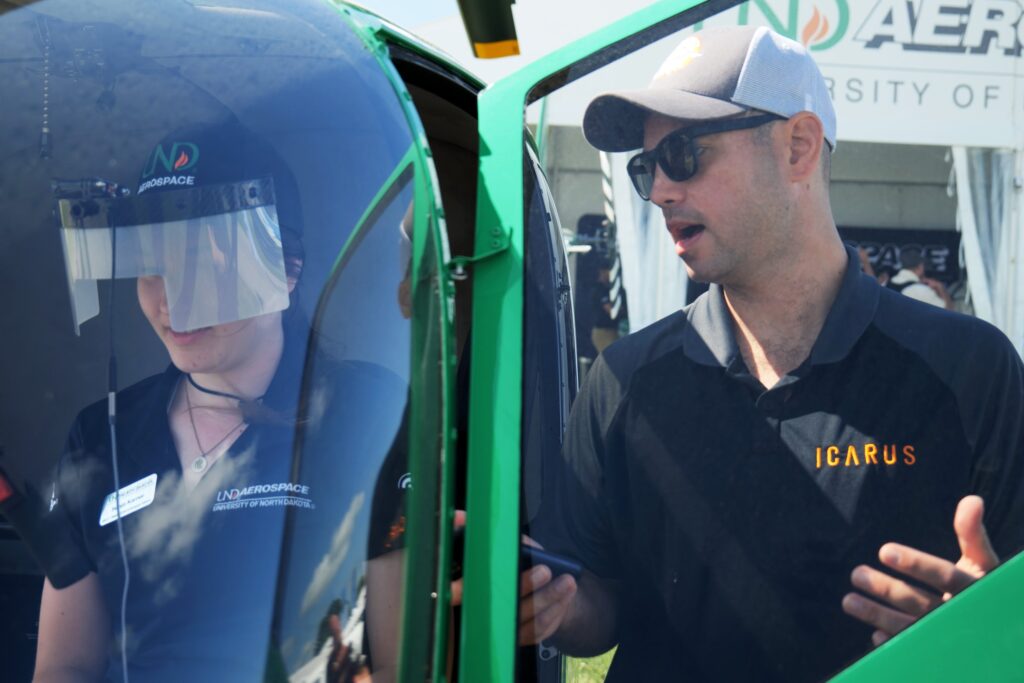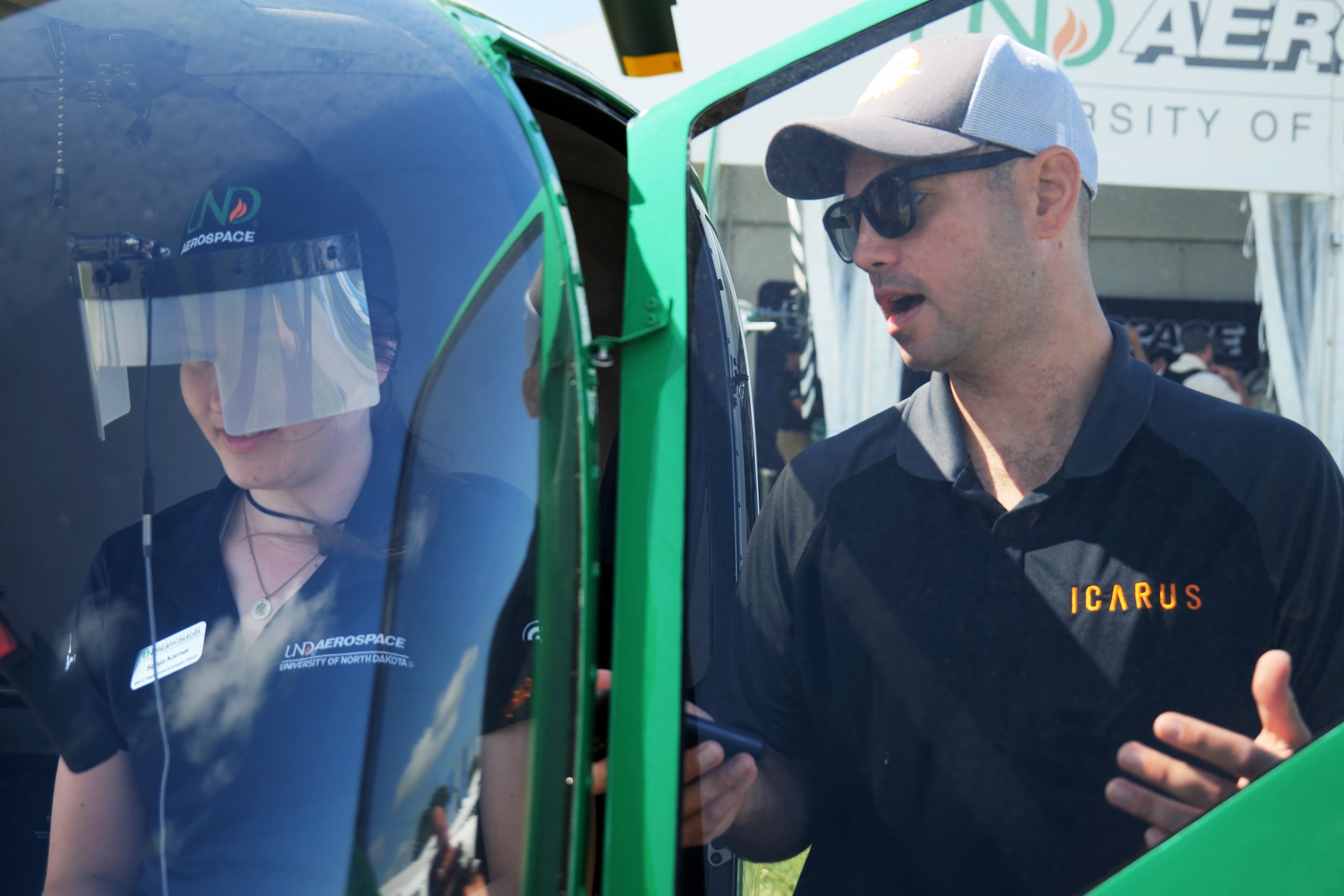Icarus provides ‘smart’ view-limiting helicopter pilot training device to University of North Dakota

Icarus in mid-2023 delivered to the University of North Dakota five of its “smart” view-limiting helicopter pilot training devices that gives flight training instructors the ability to change flight visibility for students.
Nick Sinopoli, company founder and managing partner, told Avionics on Nov. 13 that the deal had a total value of $6,250 to outfit the university’s Robinson R44 four-seat helicopters. Icarus’ view-limiting pilot training device is a lightweight screen that the pilot wears in front of their eyes, either clamped to a hat or flight helmet or as part of a headset. The device helps pilots practice the critical transition to instrument flight and remain calm and in control of the aircraft, the Sinopoli said.
Icarus has also sold its device to the U.S. Army National Guard (ANG). Sinopoli declined to provide details, but said that 30% of states in the ANG use it.

A student pilot dons an ICARUS flight training device during a demonstration by a company employee. ICARUS photo
The device uses an electronic signal to change the opacity of the screen in front of the student’s eyes, simulating clouds or fog while flying. It can simulate different levels of flight visibility, from unrestricted to less than a half-mile.
When in use, the device can be changed by a flight instructor from transparent to opaque either gradually or instantly, simulating the aircraft’s entry into low-visibility conditions, according to a company statement. The device replaces the traditional hood for instrument flight rules (IFR) training and allows for inadvertent instrument meteorological conditions training. The screen is battery-powered and paired to the instructor’s iPad for remote control.
The technology used in Icarus’ device is polymer-dispersed liquid crystal (PLDC) film, also known as smart glass, Sinopoli said. The idea for the technology came after he had a near miss with a bird under a paper hood and had just read about the Boeing 787 Dreamliner commercial fixed-wing jet airliner’s electrochromic windows, which Sinopoli said uses the same type of technology to electronically dim cabin windows.
The device is powered by a common small battery that provides six hours of power. The device is paired to the instructor’s tablet computer for remote control.
There is a cutout in the visor that Sinopoli said allows the student pilot to see the instrument panel. It is tailored to the aircraft to ensure the pilot does not receive any visual cues that they will not get in a cloud. Old hoods and foggles, he said, allow pilots to see outside, which leads to a massive training gap and a false sense of security. As the R44 has a small instrument panel, it has the smallest cutout.
Icarus’ device was granted fleet-wide airworthiness releases for the Sikorsky UH-60M/L Black Hawk and the Airbus Helicopters UH-72A Lakota Light Utility Helicopter (LUH) earlier this year.
UND Aerospace has been evaluating the ICARUS device for the past year and found it extremely valuable. “We are always looking at innovative ways to improve safety and flight training, and the ICARUS has proven to be a key tool for instrument training,” said Wes Van Dell, chief flight instructor for the helicopter program at UND Aerospace. “Using the ICARUS in the aircraft combined with our GAT Helo spatial disorientation simulator on the ground, we aim to provide the highest level of instrument and IIMC training in the industry.”
—————
Boost Internet Speed–
Free Business Hosting–
Free Email Account–
Dropcatch–
Free Secure Email–
Secure Email–
Cheap VOIP Calls–
Free Hosting–
Boost Inflight Wifi–
Premium Domains–
Free Domains





